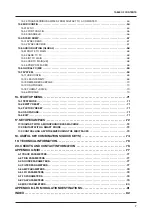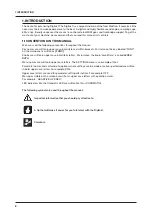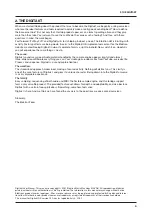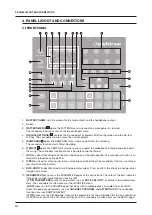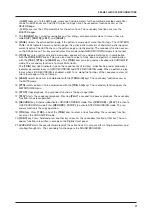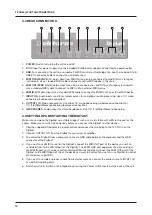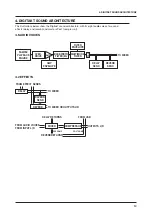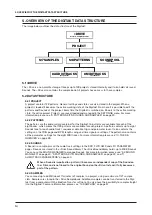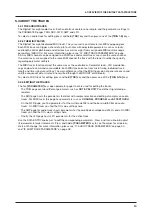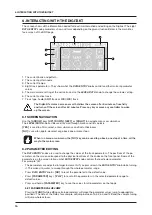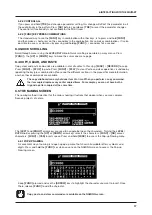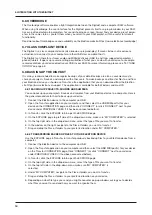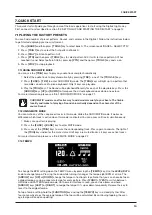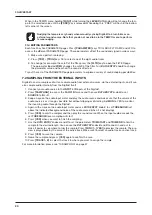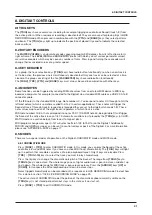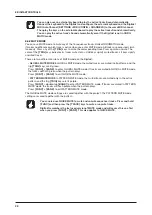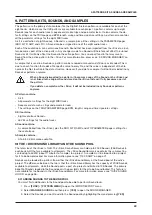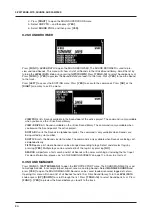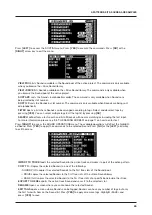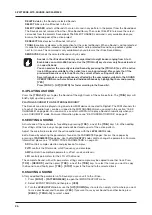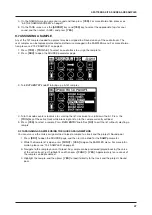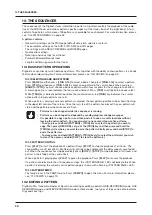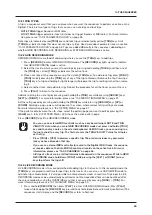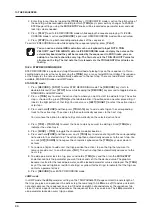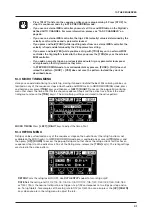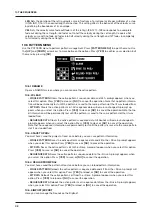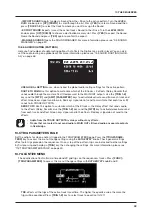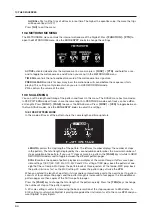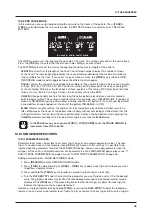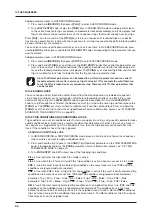
8. DIGITAKT CONTROLS
21
8. DIGITAKT CONTROLS
8.1 TRIG KEYS
The
[TRIG]
keys have several uses, including for example, trigging an audio track Sound (track 1–8) from
the active pattern. (When sequencer recording is deactivated). They are also used for placing trigs in GRID
RECORDING mode. When pressed in combination with the
[PTN]
and
[BANK]
keys, they select patterns
and banks. The
[TRIG]
keys light up to indicate the position of placed trigs and to indicate the selected
bank and track.
8.2 ROTARY ENCODERS
The
MASTER VOLUME
is an absolute encoder, spanning roughly 320 degrees from its left extreme to its
right extreme. The
LEVEL/DATA
and
DATA ENTRY
knobs (with which you set various parameter values),
are relative encoders which may be spun any number of turns. Pressing and turning these encoders will
change their associated values at a greater speed.
8.3 KEY BEHAVIOR
As a group, the track selection keys (
[TRIG]
keys) have radio button functionality, i.e. when a new track is
set to be active, the previous one is simultaneously deactivated. Only one track can be selected at a time.
Likewise, the group consisting of the five
[PARAMETER]
keys have radio button functionality.
The
[FUNC]
,
[TRK]
,
[PTN]
, and
[BANK]
keys must always be used in combination with other keys.
8.4 MIDI NOTES
Some functions can be triggered by sending MIDI note values from an external MIDI device (a MIDI key-
board or a computer, for example) connected to the Digitakt via a standard MIDI cable or a USB 2.0 A to B
connector cable.
Of the 128 notes in the standard MIDI range, Note numbers 0–7 correspond to notes C0 through to G0, the
leftmost octave (which is sometimes called C-2–G-2 in certain applications). These notes will trigger the
Sound of track 1 through track 8, respectively (provided they are set to their default channels 1-8). These
notes values map to each of the eight tracks, regardless of which track is active.
MIDI note numbers 12–84, that corresponds to notes C1–C7 (C5, MIDI note 60, being middle C) will trigger
the Sound of the active track in any of its 73 chromatic variations (as if played by the
[TRIG]
keys in CHRO-
MATIC mode, see section below), from lowest to highest pitch.
MIDI program change messages 0–127 will select pattern 1–128 (A01–H16) on the Digitakt. Additionally,
MIDI CC and NRPN messages can be sent to control various aspects of the Digitakt. For more information,
please see “APPENDIX A: MIDI” on page 77.
8.5 MODES
There are two special modes of operation on the Digitakt: CHROMATIC mode and MUTE mode.
8.5.1 CHROMATIC MODE
Press
[FUNC]
+
[TRK]
to enter CHROMATIC mode. In this mode, you can play the Sound of the active
audio track (or send MIDI notes if you have an active MIDI track) chromatically. The
[TRIG]
keys will light
up in a pattern that resembles an octave of a piano keyboard layout. Only lit keys are playable. Press
[TRK]
+
[TRIG 1–16]
keys to select the track you want to play chromatically.
Press the trig keys to change the chromatic note pitch of the Sound. The range from
[TRIG 9]
key to
[TRIG 16]
key is one octave. The whole range you can trig for audio tracks spans 6 octaves: middle, 1 up
and 4 down. The whole range for MIDI tracks spans eleven octaves. Press the
[ARROW]
keys
[UP]
or
[DOWN]
, to transpose the virtual keyboard up or down in octave steps.
Notes trigged chromatically can be recorded on the sequencer in LIVE RECORDING mode. Find out how
this is done in section “10.2.3 LIVE RECORDING MODE” on page 29.
The active state of CHROMATIC mode (the portion of the chromatic keyboard currently visible on the
[TRIG]
keys) is not stored per pattern but stays in the state as it was last set.
Press
[FUNC] + [TRK]
to exit CHROMATIC mode.
Summary of Contents for Digitakt
Page 1: ...Digitakt User Manual...
Page 84: ...4116ENG O...

